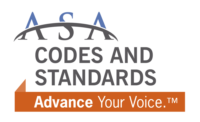To better protect your employees and to reduce your risk of costly workers comp claims, it is crucial to recognize the symptoms and dangers of carbon monoxide poisoning. It's not hard to establish a safer workplace. Here are several points with which to start:
- Practice responsible driving techniques;
- Establish a good maintenance program for forklifts;
- Educate employees about the warning signs of CO exposure;
- Encourage them to watch for and report poisoning symptoms immediately;
CO exposure interferes with the blood's ability to carry oxygen to the body and brain, which are dependent upon oxygen to survive. Indications of CO accumulation in the blood include slight headaches, weakness and dizziness. Increased concentrations of CO in the blood stream can cause nausea, vomiting, confusion, collapse, coma and even death.
Headaches or dizziness during or after forklift operation should be reported immediately, as confusion and collapse could quickly follow. If CO poisoning is suspected, do not wait for symptoms to worsen -- seek help immediately.
Prevention Tips
Forklifts powered by gasoline, diesel fuel or propane all emit CO in their exhaust. In enclosed or insulated areas, high concentrations of CO can remain in the air several hours after running the last forklift in the warehouse or distribution center. Be alert to CO exposure year-round, especially during cold weather when doors and windows are kept closed and ventilation is reduced. To minimize the hazards of CO:
- Warn your operators not to leave forklifts idling in the loading docks or aisles when not in use.
- Do not leave forklifts running inside shipping trucks or other containers. Hazardous concentrations can build up quickly in these confined spaces.
- All forklifts should be properly tuned-up as part of a good maintenance program.
- Make sure there's adequate ventilation in the building. Even new factory-tuned vehicles can create a CO exposure when used in an unventilated environment.
- Have your operators drive smart. Avoid racing the engine, braking erratically and idling for long periods. Try to operate the hydraulic systems with smooth movements rather than jerky motions that emit bursts of CO.
- Cold starts generate higher CO concentrations. Avoid storing or parking forklifts in cold areas to reduce warm-up time and exhaust gases.
- Ask whether your vehicle can be fitted with a catalytic converter to reduce CO emissions associated with internal combustion forklifts.
- Consider air monitoring to determine your employees' exposure. Often, this can be done with a disposable diffusion tube that measures the time weighted average of exposure. (Zurich Risk Engineers can provide the equipment and assistance needed for air monitoring.)
Beware of CO exposure in your warehouse. Practice responsible driving techniques to reduce carbon monoxide buildup, and establish a good maintenance program for forklifts.
Educate and encourage employees to be vigilant for the warning signs of CO exposure, and report poisoning symptoms immediately. You can take control of CO exposure.



